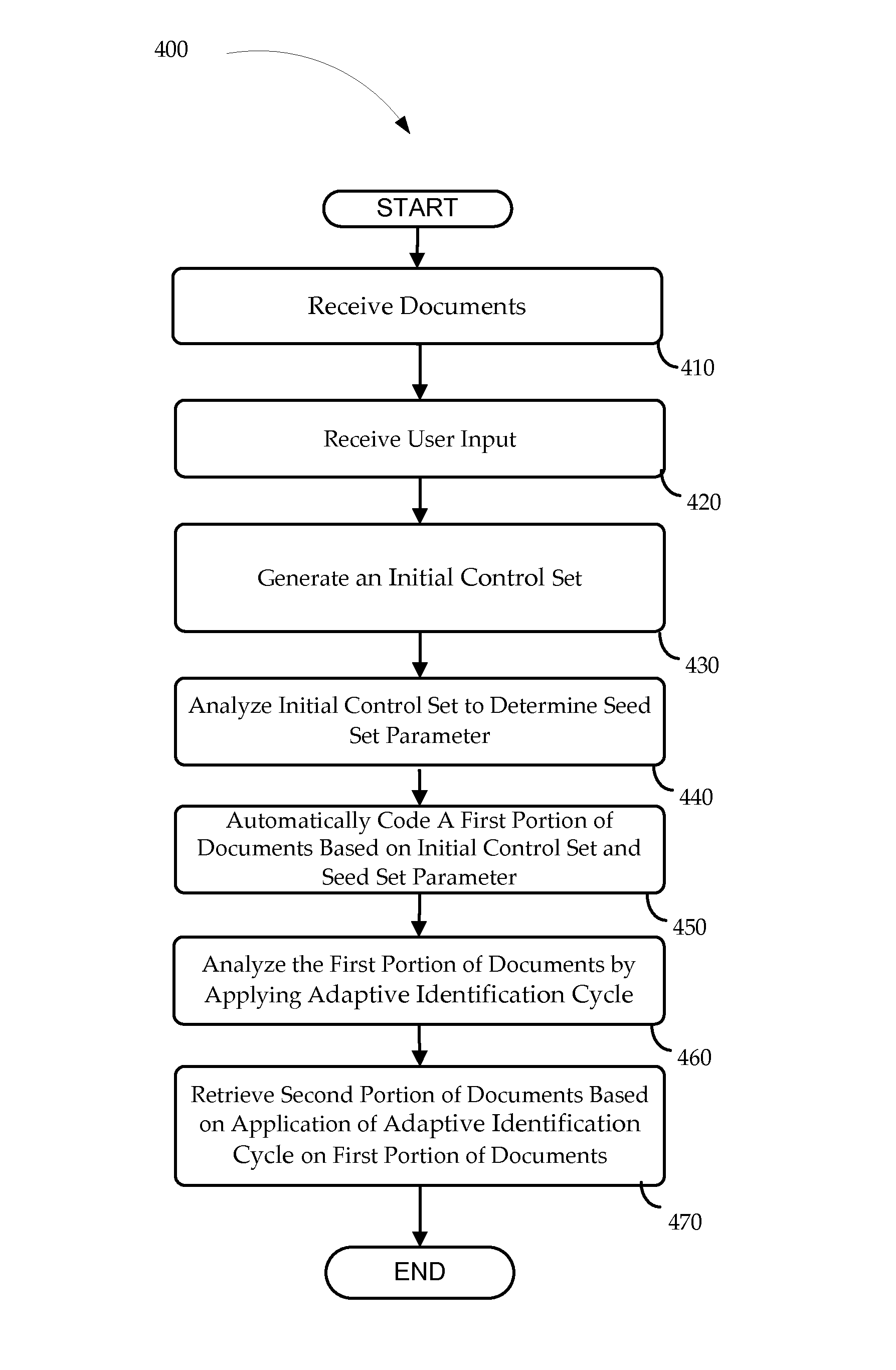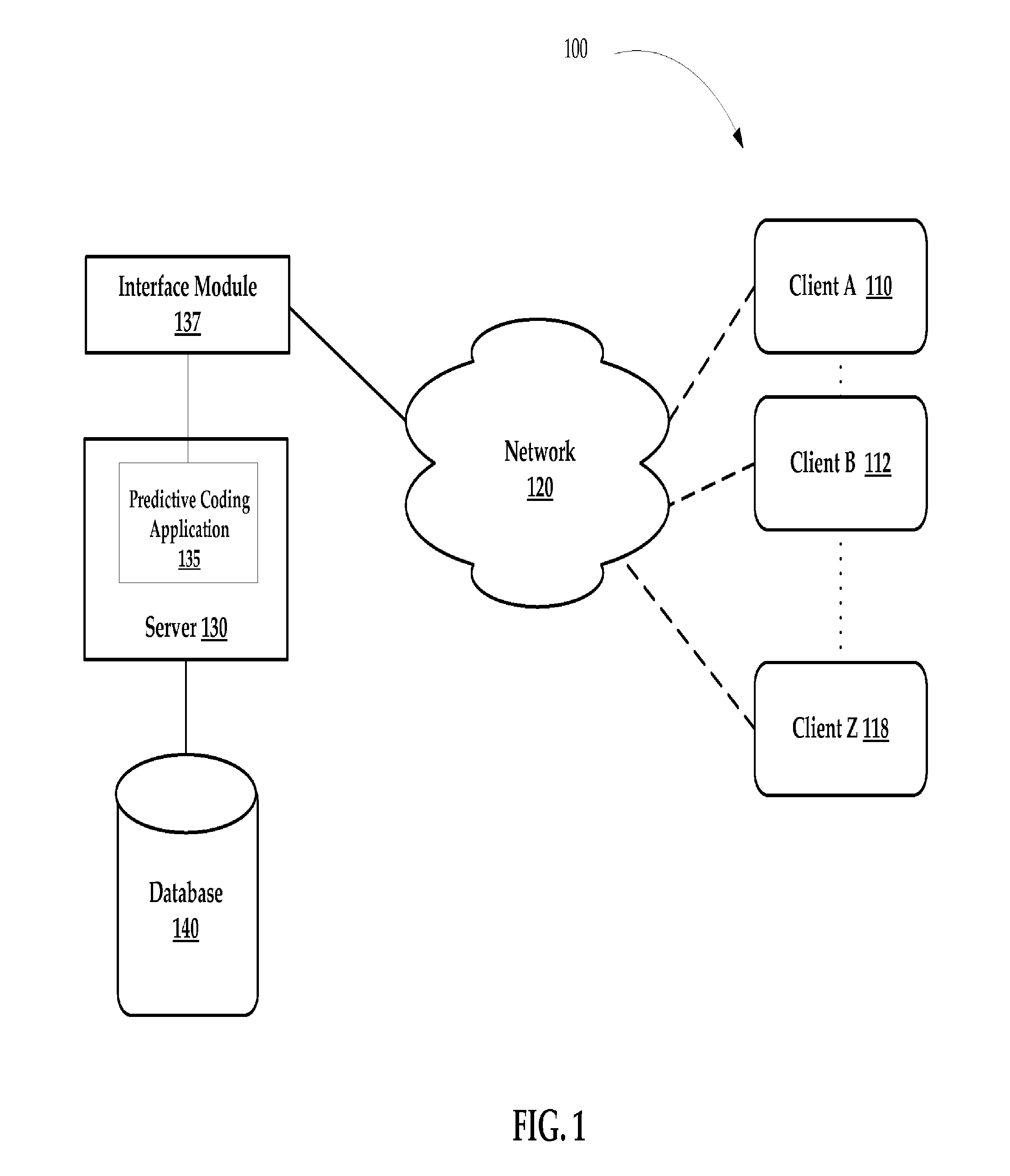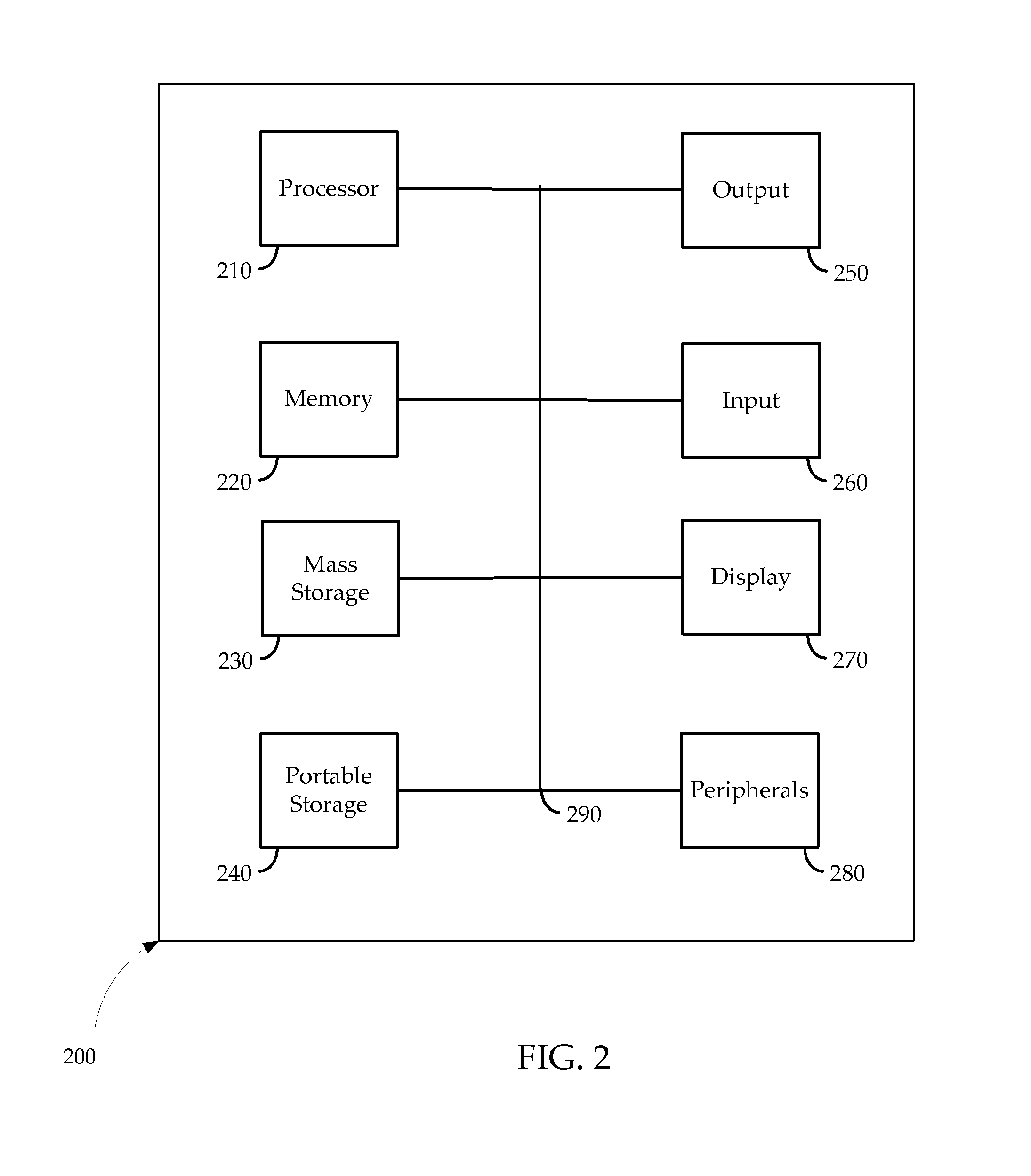Systems and methods for predictive coding
a document analysis and predictive coding technology, applied in the field of systems and methods for document analysis, can solve the problems that relying merely on “human-only review” of documents may not be the best choice available for document review and analysis, and achieve the effects of reducing the time required, improving the quality and accuracy of document review, and improving the quality of review
- Summary
- Abstract
- Description
- Claims
- Application Information
AI Technical Summary
Benefits of technology
Problems solved by technology
Method used
Image
Examples
Embodiment Construction
[0018]Embodiments of the present technology provide systems, methods, and media for analyzing documents. Specifically, this technology may utilize predictive coding (also known as “predictive tagging”) as a way to review and analyze documents. Predictive coding refers to the capability to use a small set of coded documents (or partially coded documents) to predict document coding of a corpus. In some embodiments, a corpus includes a plurality of documents, a data collection, a document collection, or any grouping of documents that require review and analysis. The corpus may comprise a plurality of documents that include electronically stored information (ESI).
[0019]Predictive coding is particularly helpful in the context of e-discovery document review when the number of documents is voluminous. Predictive coding allows for one to respond to a document request (such as a request for documents in the context of litigation or in response to a subpoena), in an efficient, cost-effective ...
PUM
 Login to View More
Login to View More Abstract
Description
Claims
Application Information
 Login to View More
Login to View More - R&D
- Intellectual Property
- Life Sciences
- Materials
- Tech Scout
- Unparalleled Data Quality
- Higher Quality Content
- 60% Fewer Hallucinations
Browse by: Latest US Patents, China's latest patents, Technical Efficacy Thesaurus, Application Domain, Technology Topic, Popular Technical Reports.
© 2025 PatSnap. All rights reserved.Legal|Privacy policy|Modern Slavery Act Transparency Statement|Sitemap|About US| Contact US: help@patsnap.com



